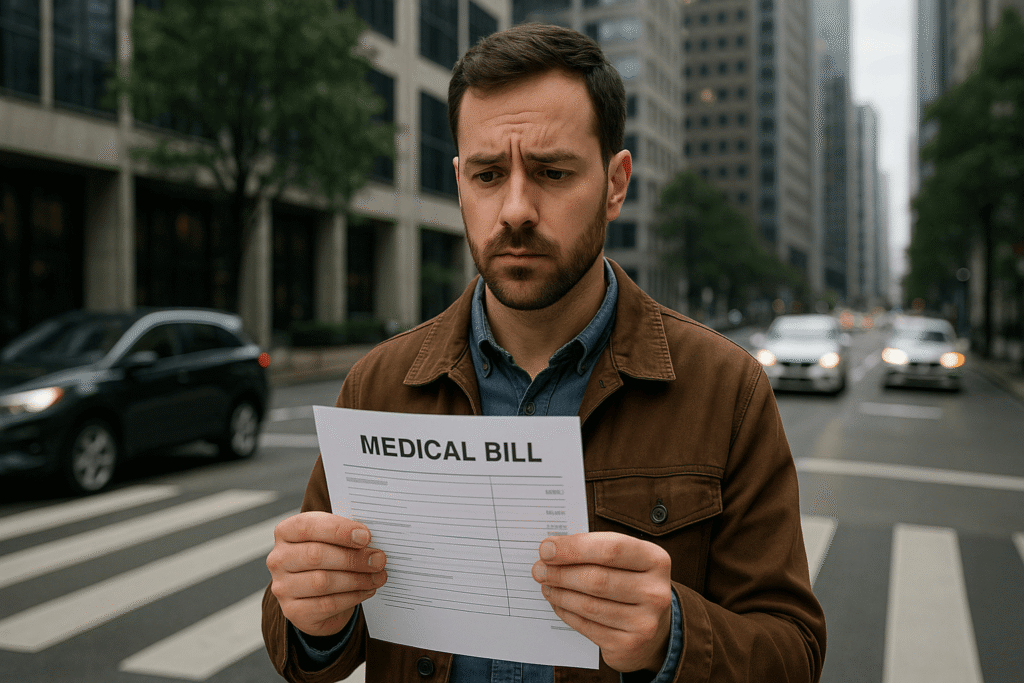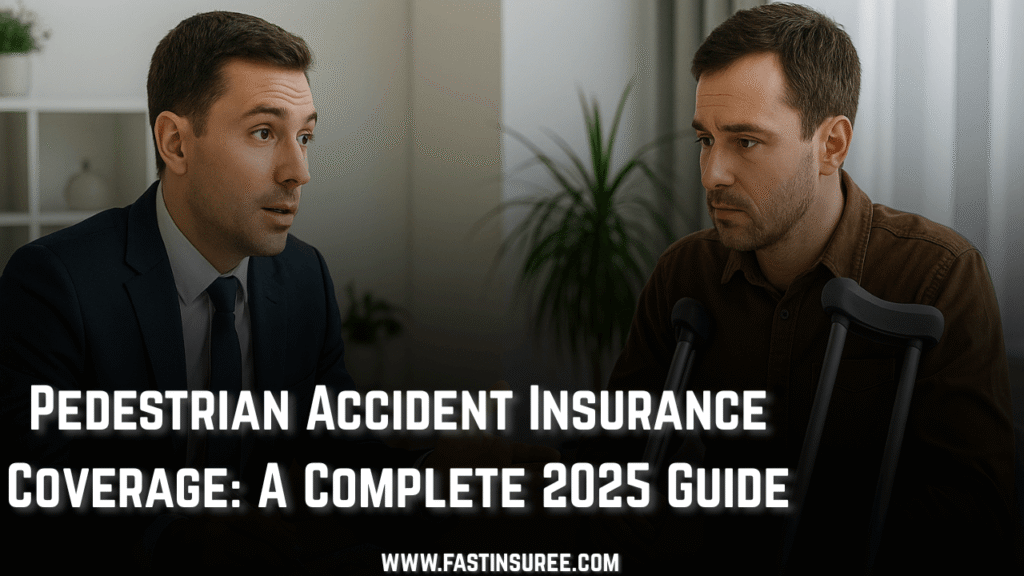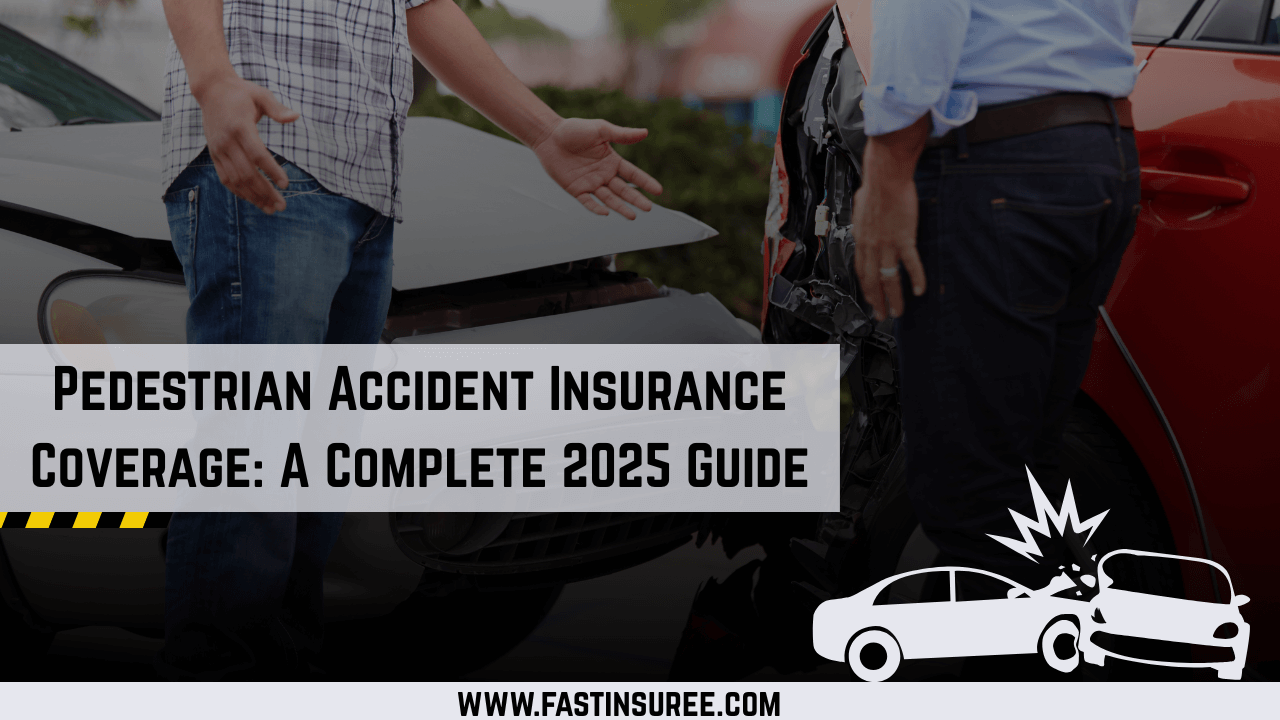Pedestrian accidents are a growing concern in both urban and rural areas. Whether you’re crossing the road, walking through a parking lot, or strolling along a sidewalk, the risks of being involved in an accident are very real. But what happens if you’re hit by a vehicle? Who pays for your medical expenses, lost wages, or other damages? This comprehensive guide explores everything you need to know about pedestrian accident insurance coverage and your rights in 2025.
What Is Pedestrian Accident Insurance Coverage?
Pedestrian accident insurance coverage refers to the financial protection available to pedestrians who are injured in an accident involving a motor vehicle. This type of coverage can come from multiple sources, including the driver’s auto insurance, the pedestrian’s own health or auto insurance, or even government schemes in certain countries.
Does Auto Insurance Cover Pedestrian Accidents?
Yes, in most countries, the at-fault driver’s auto insurance can cover the pedestrian’s injuries. This usually falls under the driver’s liability coverage, which pays for bodily injury and property damage they cause to others.
Can Pedestrians File a Claim Against the Driver’s Insurance?
Absolutely. If a driver is responsible for the accident, pedestrians have the legal right to file a personal injury claim against the driver’s insurance policy. This can cover:
- Medical bills
- Lost income
- Pain and suffering
- Rehabilitation costs
Types of Insurance That May Cover Pedestrian Accidents
- Personal Injury Protection (PIP): Covers medical expenses regardless of fault (common in no-fault states in the U.S.).
- Medical Payments Coverage (MedPay): Helps pay for minor injuries regardless of fault.
Uninsured/Underinsured Motorist Coverage (UM/UIM): Provides protection if the driver has little or no insurance. - Health Insurance: Can be used after PIP or MedPay is exhausted.
- Homeowners/Renters Insurance: May apply in rare cases, like accidents on private property.

What to Do After a Pedestrian Accident (Step-by-Step Guide)
- Seek medical help immediately – even if injuries seem minor.
- Call the police and file a report.
- Take photos of the scene, injuries, and vehicle.
- Collect contact information from witnesses and the driver.
- Notify your insurance company.
- Keep all medical records and bills.
- Consider consulting a personal injury lawyer.
Who Is Liable in a Pedestrian Accident?
Liability depends on the situation. While drivers are often at fault, pedestrians can also be partially responsible if they jaywalk, cross against a signal, or are distracted (e.g., using a phone). Liability is determined based on evidence, police reports, and witness statements.
How to File a Pedestrian Insurance Claim
- Report the incident to the police.
- Notify your or the driver’s insurance company.
- Submit necessary documentation (photos, medical records, bills).
- Keep track of communications.
- Follow up regularly.
- Get legal assistance if a claim is denied or delayed.
Average Compensation for Pedestrian Accident Victims
While compensation varies, factors include:
- Severity of injuries
- Medical treatment costs
- Time off work
- Emotional distress
In the U.S., average payouts can range from $15,000 to over $100,000, depending on circumstances.
Time Limits: Statute of Limitations for Pedestrian Injury Claims
Each country or state has its own time limit to file a claim. For example:
- USA: Typically 1–3 years from the date of the accident.
- UK: 3 years
- Pakistan: 1–2 years (depending on legal procedure)
Legal Rights of Pedestrian Accident Victims
You have the right to:
- Seek medical care
- File a compensation claim
- Get legal representation
- Be protected from insurance pressure tactics

Common Causes of Pedestrian Accidents and Insurance Implications
- Distracted driving
- Speeding
- Failing to yield
- Drunk driving
- Poor visibility or weather
Each of these factors influences insurance payouts and fault determination.
Previous Article: Business Insurance for Freelancers in UK (2025 Guide)
Does Health Insurance Cover Pedestrian Accident Injuries?
Yes, your health insurance can kick in after exhausting PIP or MedPay. However, some policies may demand repayment (subrogation) if you receive a settlement from another source.
Pedestrian Hit-and-Run: What Insurance Can Still Help You?
If the driver flees the scene:
- Uninsured Motorist Coverage (UM) may apply.
- Some countries offer victim compensation funds for such cases.
- Legal aid or charity programs may also assist.
Pedestrian Accidents Involving Children or Seniors
These groups may receive special legal and financial consideration:
- Lower threshold for proving driver negligence
- Higher potential compensation for long-term care needs
Tips for Pedestrians to Stay Safe and Be Insured
- Always walk on sidewalks and use crosswalks.
- Avoid distractions (phones, headphones).
- Wear reflective clothing at night.
- Review your health and auto insurance coverage for gaps.
Pedestrian Insurance Coverage by Country
USA: PIP, MedPay, UM/UIM, and liability coverage common.
UK: Motor Insurance Bureau (MIB) covers hit-and-run cases.
Canada: Provincial plans plus personal insurance apply.
Pakistan: Mostly legal claims against the driver or their employer.
Australia: Compulsory Third Party (CTP) insurance covers pedestrians.
Does Travel Insurance Cover Pedestrian Accidents Abroad?
Yes, many travel insurance policies include coverage for accidents while walking, including medical evacuation, hospitalization, and repatriation. Always read the fine print.
How Pedestrian Accidents Affect Car Insurance Rates
If a driver hits a pedestrian and is found at fault, their insurance premiums may increase significantly especially if there’s a serious injury claim or lawsuit involved.
Previous Article: Affordable Health Insurance Plans USA (2025 Guide)
FAQs About Pedestrian Accident Insurance Coverage
What type of insurance should a pedestrian have?
Health insurance and, if possible, PIP or UM/UIM via auto insurance can provide great protection.
Can I sue the driver who hit me?
Yes, if they were at fault, you can file a personal injury lawsuit or insurance claim.
How long do I have to file a claim?
It varies, but generally 1–3 years depending on your location
Will my own insurance cover me if the driver runs away?
Yes, if you have UM coverage or live in a country with victim compensation funds.
Can I get compensation for emotional trauma?
Yes, emotional distress is often included in pain and suffering compensation.
Conclusion
Pedestrian accident insurance coverage is complex but essential. Knowing your rights, being prepared with the right insurance, and acting swiftly after an accident can make all the difference. Whether you’re a pedestrian or a driver, awareness and protection are key to navigating unfortunate incidents with confidence.

